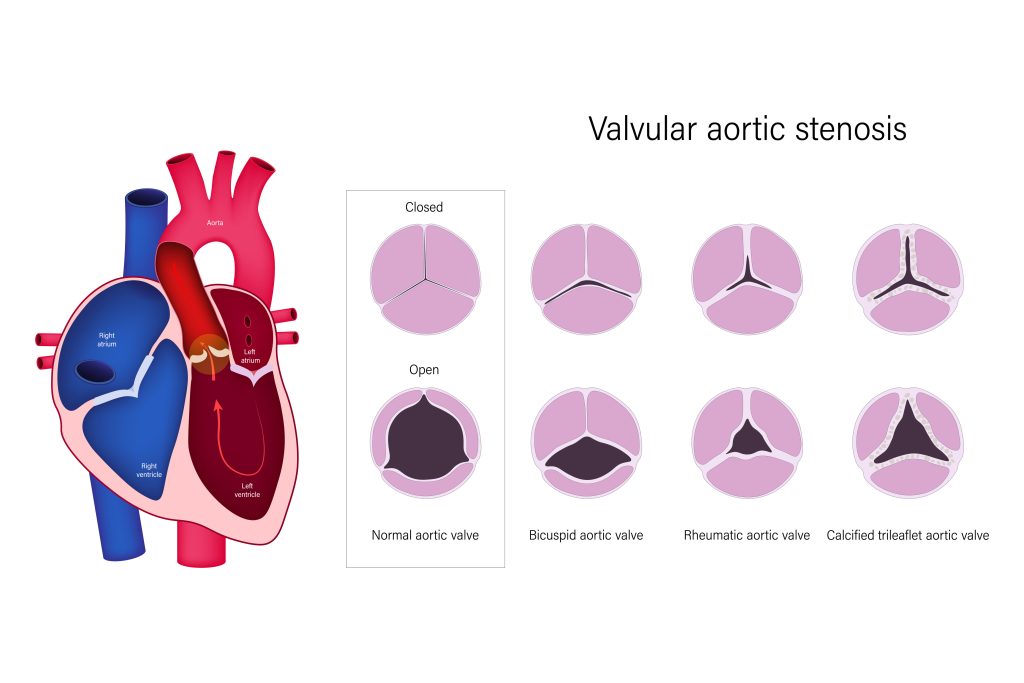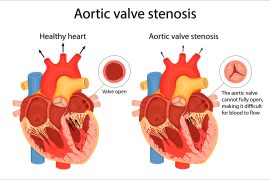Introduction
There are many ways to treat patients with structural heart diseases. Transcatheter Aortic Valve Replacement (TAVR) and Surgical Aortic Valve Replacement (SAVR) are two different methods used to treat aortic stenosis, a condition in which the aortic valve becomes narrowed and doesn’t open properly. The aortic valves become calcified and stiff, making it difficult for the heart to pump enough blood effectively. The main function of the aortic valve is to open and close and allow blood to flow from the left ventricle of the heart to the aorta through which oxygen-rich blood is supplied to the rest of the body and the coronary arteries. This can increase the risk of heart failure, leave you feeling faint and dizzy, and cause chest pain, also known as angina. In such a case, aortic valve repair surgery, or what we know as aortic valve replacement, is often recommended for these heart patients. It is totally up to the doctor to determine the better option: open-chest surgical aortic valve replacement (SAVR) or minimally invasive transcatheter aortic valve replacement (TAVR), after a detailed consideration of all factors, including the patient’s preferences.
What is the difference between TAVR and SAVR?
TAVR is a minimally invasive, non-surgical procedure done through a small groin incision. A catheter is inserted through the incision and guided to the heart, where a replacement valve is deployed without the need to open the chest or the heart. TAVR is typically done on older patients or those who previously had a SAVR and are considered high-risk for traditional open-heart surgery, who are vulnerable to complications.
SAVR, on the other hand, is a traditional open-heart surgical procedure that has been in practice for over 50 years and involves making a large incision in the chest to access the heart. The damaged or diseased aortic valve is then replaced through the incision. SAVR is typically done on symptomatic patients who can tolerate open-heart surgery.
Which is better – TAVR or SAVR?
Both TAVR and SAVR have risks associated with them as well as similar outcomes in terms of survival and improvement in symptoms.
- In terms of longevity, both TAVR and SAVR have similar outcomes, with both valves lasting for about 10-15 years.
- Minimal invasive procedure: One of the main advantages of TAVR over SAVR is that it is a minimally invasive procedure, which means that the incision is much smaller and there is less pain and discomfort to the body.
- Better quality of life: As TAVR is done through a catheter rather than open-heart surgery, there is a lower risk of complications such as bleeding and infection.
- Latest Technology with lesser pain & faster recovery Another advantage of TAVR is that it is typically considered a safer option for high-risk patients, such as the elderly or those with other health conditions that make open-heart surgery risky. This is because TAVR is less invasive and carries a lower risk of complications.
- Shorter hospital stay & improvement in heart function: TAVR is associated with a shorter hospital stay and a faster recovery time when compared to SAVR. TAVR also has a lower risk of stroke in comparison to SAVR.
Also, the following factors decide which is the right procedure to choose between SAVR and TAVR,
- Size considerations – Your surgeon will consider the size of your aortic valve and blood vessels.
- Type of Aortic Disease – The type of aortic disease or condition also influences the surgeon’s choices.
- Co-morbidities – Pre-existing co-morbidities like diabetes, lung disease or a history of heart attack will heavily influence the surgeon in the choice of procedure.
- Cardiac issues and stroke risks – The choice of valve procedures is determined by the presence of certain cardiac conditions in patients. Like those with coronary artery diseases requiring surgical correction should opt for SAVR.
- Age and frailty – Physiological conditions like age and capacities in daily life like ability to function on their own, mobility, ability to move around and strength of grip also determine the choice of valve procedure.
Conclusion
It’s important to consult a cardiologist and/or cardiac surgeon for guidance on which procedure is best for you, as the best option will depend on the individual’s specific heart condition and overall health. This will involve exploring all the benefits, risks, advantages, and disadvantages as well. Both TAVR and SAVR have similar outcomes in terms of survival and improvement in symptoms, but each has unique advantages and disadvantages.
FAQs :
Q. What is the difference between TAVR and SAVR?
A. TAVR is a minimally invasive procedure that is done through a small incision in the groin. A catheter is inserted through the incision and guided to the heart, where a replacement valve is deployed. SAVR, on the other hand, is a traditional open-heart surgical procedure that involves making a large incision in the chest to access the heart. The aortic valve is then replaced through the incision.
Q. Who is a candidate for TAVR?
A. TAVR is typically done on patients who are considered high-risk for traditional open-heart surgery. This can include elderly patients or those with other health conditions such as lung disease, kidney disease, or a history of previous heart surgery.
Q. Who is a candidate for SAVR?
A. SAVR is typically done on younger patients and those who can tolerate open-heart surgery.
Q. How long does each procedure take?
A. TAVR typically takes about 2-4 hours, while SAVR can take 4-6 hours or longer.
Q. What is the recovery time for each procedure?
A. TAVR has a shorter recovery time than SAVR, with most patients able to return to normal activities within 1-2 weeks. SAVR has a longer recovery time, with most patients taking 4-6 weeks or longer to fully recover.
Q. What are the risks associated with TAVR and SAVR?
A. TAVR carries a risk of complications such as bleeding, infection, and valve-related complications. SAVR carries risks such as bleeding, infection, and blood clots, as well as the risks associated with any open-heart surgery.
Q. How long do the valves last?
A. Both TAVR and SAVR valves last for about 10-15 years.
Q. Which procedure is best for me?
A. The best procedure for you will depend on your specific condition and overall health. It is important to consult a cardiologist and/or cardiac surgeon for guidance on which procedure is best for you.
References :
https://www.medscape.com/viewarticle/946173
https://www.mainlinehealth.org/blog/savr-vs-tavr





Comments are closed.